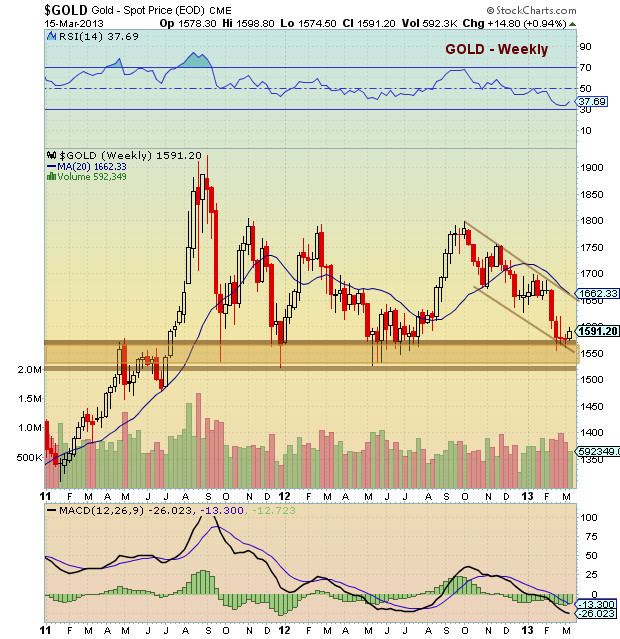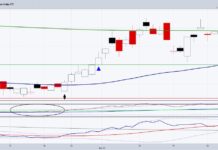Inflation, deflation, stagflation, one nation, our nation, who knows. Everyone wants to have a specific reason why Gold prices rise or fall, but the truth is, investing or trading Gold is a tricky business. Many of the ingredients for Gold to rise are present, including intermittent political instability, uncertain global economy, money printing, prolonged low rates, etc. But, many also get blinded by their emotion and bias and forget that investments rarely rise in a straight line, especially over many years. Fits and starts and consolidations and pullbacks should be expected. Especially in the face of a dollar rally. Yes, I said dollar rally. And finally, Gold prices are elevated and have been for some time. This doesn’t mean that current Gold prices are unwarranted, but rather that Gold bugs and metal enthusiasts need to relax and realize that similar to any other investment, gold will rise again when the time is right. Although $1591 feels “cheap,” Gold prices were hovering around $350 just 10 years ago.
So whether gold prices are gearing up for a bigger drop, or merely finishing a two year consolidation of the monster gains of the past 10-15 years, Gold will ultimately tell its story through its price action. So let’s take a look at where Gold prices are and what investors should be watching for.
Currently, Gold prices are sitting on the bottom side of a 5 month downtrend channel. Note that this channel is very similar to the prior one from Feb 2012 to June 2012. Gold prices have also touched down into a major support band between $1520 and $1580. A break above $1620 could set up a test of $1650 (upper channel). And a move above the upper channel line would flash Gold’s bull horns. This would likely coincide with renewed sovereign debt concerns (currently focused on Europe). On the other hand, a move below $1520, would likely signal a deeper leg down with renewed price discovery. Let price lead the way.
Trade safe, trade disciplined.
Twitter: @andrewnyquist and @seeitmarket
No position in any of the mentioned securities at the time of publication.









